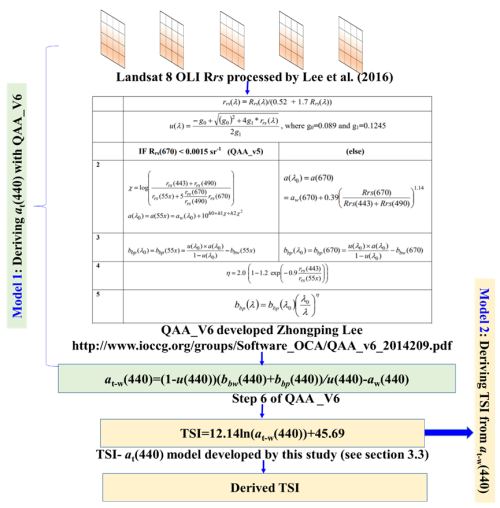[ Instrument Network Instrument Development ] The traditional nutritional status evaluation method requires a large number of water quality parameters to be measured. The duration is long, the process is complicated, and space-time continuity monitoring cannot be achieved. The application of remote sensing technology effectively compensates for the shortcomings of traditional methods in space-time continuity. However, traditional methods of remote sensing extraction are mostly based on remote sensing estimation of single or multiple TSI indicators, and have shortcomings such as low precision and poor versatility. Under the support of the National Natural Science Foundation of China, Zhang Yunlin's research team has made important progress in the optical characterization and remote sensing applications of the Lake Nutritional Status Index (TSI).

Quantitative relationship between TSI and absorption of different water components and verification
The absorption coefficient is a comprehensive reflection of the biochemical characteristics of lake waters, and it is also the link and bridge for the inversion of water quality parameters by bio-optical models. So can absorption quantitatively characterize changes in water body TSI? Can you achieve direct inversion of TSI? Based on 27 lake positioning observation data of different nutrient status in different regions of the country, the study systematically analyzed the coupling relationship between the absorption coefficient of different water components such as pigment particles and non-pigment particles and TSI, and selected the best optical factor for characterizing TSI. The optical model of TSI based on absorption coefficient is constructed. Based on this, the remote sensing inversion method of TSI is proposed and verified. The results show that the absorption coefficient of water component can fully reflect the change of TSI and there is a stable quantitative relationship between the two. Among them, the total absorption of water (except pure water, at-w (440)) is the best optical factor for characterizing TSI. The quantitative relationship between them is: TSI=12.14*ln(at-w(440))+45.69. Using this relationship and QAA algorithm, a TSI inversion method based on Landsat 8 OLI data is constructed. The verification accuracy of water bodies such as Qiandao Lake and Nam Co is better than 78%.

TSI inversion method based on Landsat 8 OLI data
This study has important practical significance for breaking the traditional method and realizing rapid and real-time dynamic monitoring and evaluation of lake nutrient status. It also provides a theoretical basis for the construction of the universal model of water nutrition status remote sensing evaluation. The relevant results were published in the Remote Sensing of Environment, the top journal of remote sensing (Shi et al., 2019, 232: 111349).
Waveguide Sealdozens of varieties, more than 1,000 kinds of specifications, Changchun Taiyuan Fluorine Gold Mica Co., Ltd. produces Waveguide Seal manufacturers real materials, welcome site visits. Waveguide Sealin the end Well there, samples are provided free of charge. Changchun Taiyuan Mica Film Production Base is looking forward to your visit. Can Waveguide Seal save money?
Waveguide Seal
Waveguide Seal,Military Radar Wave Sealing Window,Radar Antenna Feeder System Sealing Window,Waveguide Media Sheet
Changchun City Taiyuan FluorphlogopiteCo. Ltd. , https://www.micaslice.com